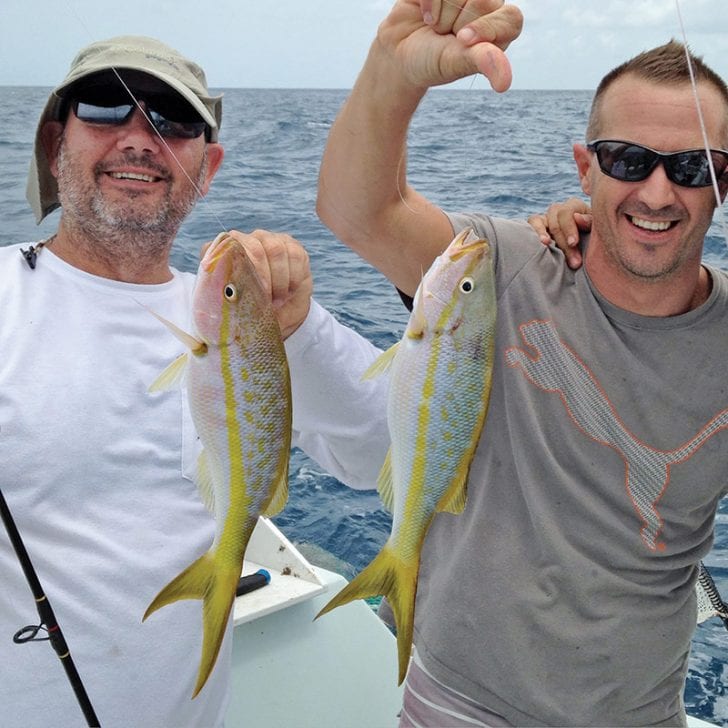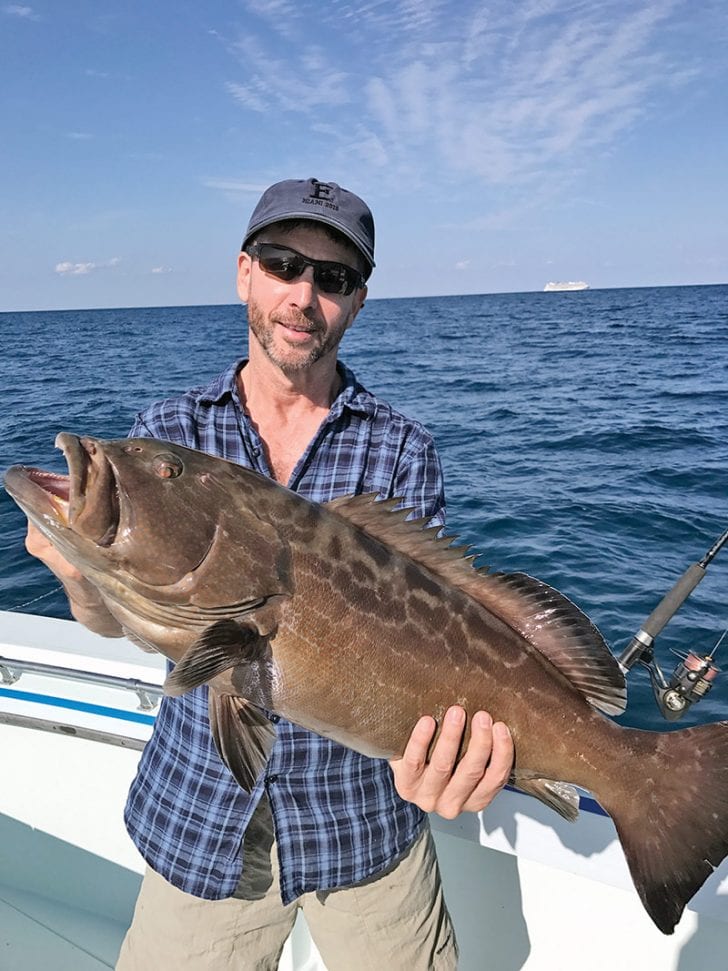
June marks that time of the year when we put away the fishing kites and transition into the summer pattern. Sure, you’ll catch a sailfish here and there and you will also catch some blackfin tuna along the edge, but the focus will start to shift towards mahi offshore and snapper and grouper along the reefs. Another nice thing about summer fishing is that most of the fish caught are amongst the best table fare.

Exactly how do things change this time of the year? Most trips will still start the same way. We’ll locate and catch some live bait first thing in the morning on our way out to the fishing grounds. Although live bait isn’t as critical during these warmer months, it is always a good idea to keep some on hand. Another difference for me, is that I always bring along some extra blocks of chum and a whole frozen bonito when available.
A typical game plan consists of a quick run offshore in search of frigate birds, floaters and or weed lines. On a good day, you may hit pay dirt first thing in the morning and catch all of the mahi you can handle. Mahi or dolphin as they are called locally can be caught using several methods. The two most popular fishing methods are trolling and run and gun. Personally, I usually prefer the run and gun method unless there isn’t anything to fish to.

Once some life is located, you can pitch jigs or bait chunks and fish will generally strike. If you encounter finicky fish, you may have to deploy a live bait. A live pilchard or herring will rarely be turned down by a hot mahi. Live bait is also useful when the fish turn off on the chunk bait or jigs. Remember to keep at least one hooked fish near the boat to help keep the rest of the school nearby. Periodically tossing a few freebies over the side will also keep fish interested and within casting distance.
On those days when the mahi move out of the area and become very elusive you may want to turn the boat back toward the West and head in towards shallower water. Once you find a good looking spot anchor up and deploy the chum bag. It is important not to become impatient when bottom fishing and to allow ample time for the chum to travel and disperse. One of most common mistakes eager anglers make is to wet a line before the anchor has had a chance to grip the bottom. Too much activity in the way of lines and tackle hitting the water will usually turn off the fish and keep them way, way back in the slick.
I prefer to chum for at least 20 to 30 minutes before letting the first bait out. Also, it is a good idea to fish no more than one or two flat lines and to take turns if possible. Remember that less is more and that quality supersedes quantity. Once the chum has had a chance to do its thing, it will be a good idea to send one of the live baits to the bottom. Snapper and grouper will find your chum line and come in to investigate. Best bottom baits are live pinfish, pilchards or even ballyhoo. On some occasions you’ll have the ballyhoo come right up to your chum bag. If live bait isn’t available, you can substitute with fresh ballyhoo or a bonito strips.
We’ll, I hope that you’ve enjoyed reading this piece. If you’d like to get in on the action make sure you book your trip early. You can do so via email, call or by text. Also, don’t forget that you can keep up with all of the action by following us on FACEBOOK, Instagram, and Twitter. If you prefer to watch some of the action, be sure to check out my YOUTUBE page for the latest video additions.
Tight Lines,
CAPT. ORLANDO MUNIZ
Nomad Fishing Charters
786-266-0171
www.fishingchartermiami.com
SPONSORS AND FRIENDS: Mercury Marine, Bass Pro Shops, Offshore Angler, Baitmasters, Tracker Marine, ACRARTEX, Orca Coolers, XTRATUF, Costa Del Mar, AFTCO, and Costa Oil.

